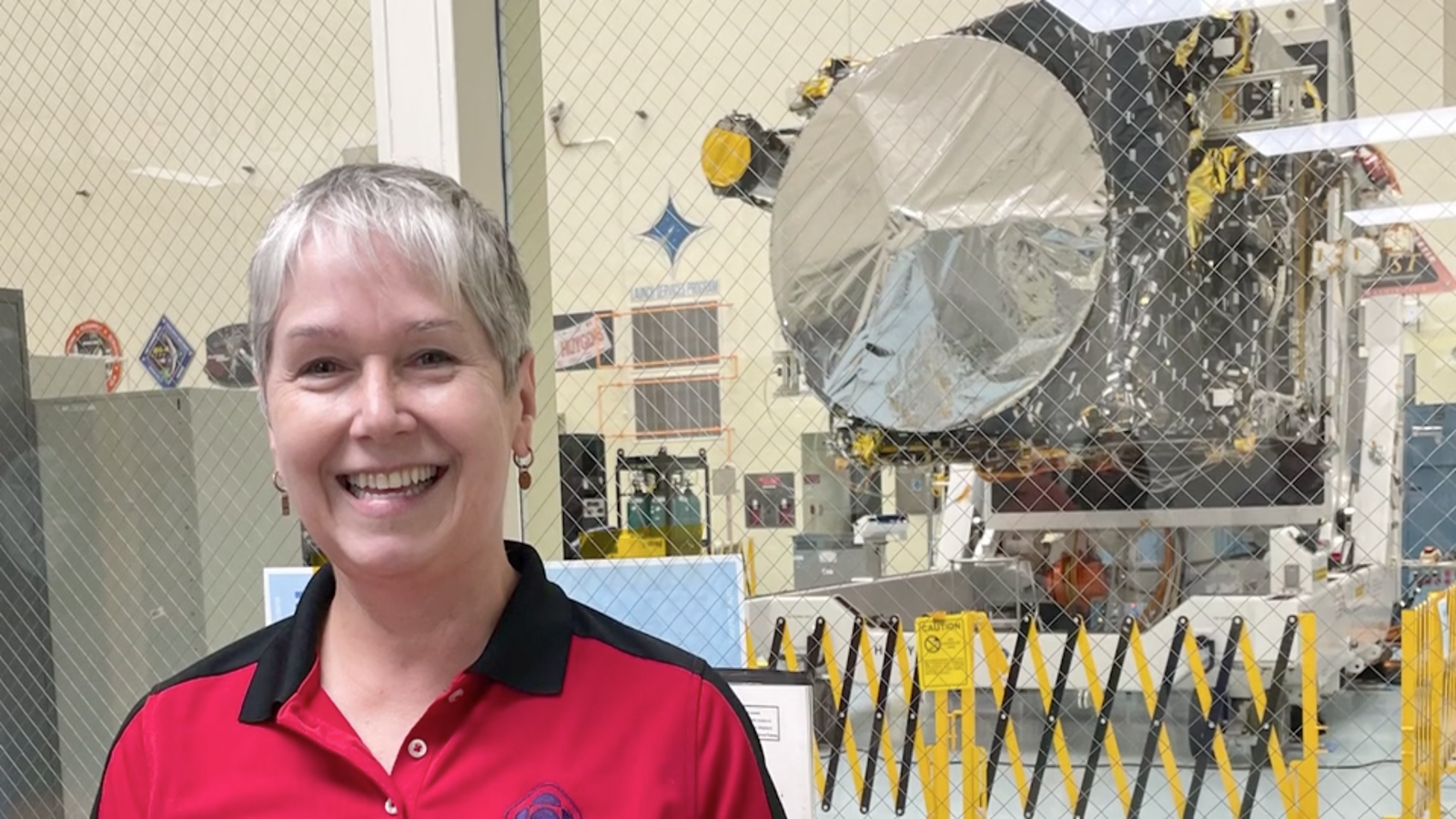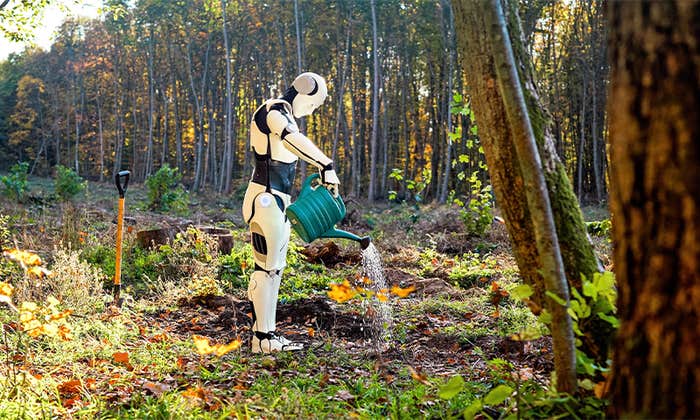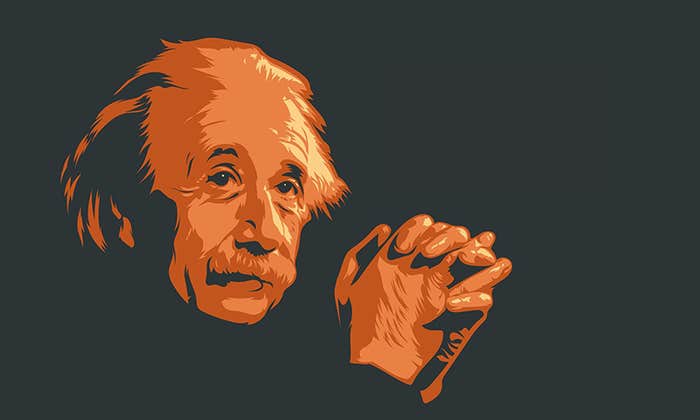Lindy Elkins-Tanton is on a journey back in time, to unlock the secrets of the early solar system, and to ask some of humanity’s biggest questions about the universe and about ourselves.
Elkins-Tanton, vice president of Arizona State University’s Interplanetary Initiative and foundation and regents professor in the School of Earth and Space Exploration there, is lead scientist for NASA’s Psyche mission, scheduled to launch on October 12. The mission plans to land on the unusually metallic asteroid Psyche to gain clues about the cores and formations of other planets and moons—including ours.
Yet Elkins-Tanton’s path to success—and to science—took many twists and turns. As an insecure young girl reading the Polish poet Czesław Miłosz and building her own bicycle, she may not have looked much like a future scientific leader. For one thing, she was a woman. Yet she has always been a seeker, someone on a quest.
Elkins-Tanton has also always been a reader. Last year, she joined philosophers and poets in discussing A.R. Ammons’s cosmic poem, “Cascadilla Falls,” on the PBS TV series Poetry in America. In the video below, excerpted from an interview filmed for that episode, Elkins-Tanton described the Psyche mission and the hope it gives her for life back on Earth.
A few months later, Elkins-Tanton published her memoir, A Portrait of the Scientist as a Young Woman. Elkins-Tanton shares her own journey in lyrical prose, from her early days as one of the few female students at the Massachusetts Institute of Technology, through her adventures conducting field research in the Siberian taiga and managing teams of sometimes unruly senior scientists, to her arrival as vice president of ASU’s Interplanetary Initiative. While Elkins-Tanton is now a world-class scientist leading a nearly billion-dollar NASA mission to send the first spacecraft to a largely metal asteroid, she is also the same curious-minded seeker who was captivated by the Chronicles of Narnia and A Wrinkle in Time as a young girl.
As I read her memoir—whose title is adapted from James Joyce’s modernist coming-of-age novel A Portrait of the Artist as a Young Man—I wanted to ask Elkins-Tanton how the imaginative worlds of poetry and fiction guided her toward discovery at the edges of our solar system. The videos below come out of the conversations that followed. Elkins-Tanton reflects on the human desire to explore and the ways she has made meaning—both scientifically and personally—in a research field that doesn’t fit neatly into traditional scientific ways of knowing. Elkins-Tanton herself, after all, has never been one to fit neatly into scientific tradition.
A Heroine’s Journey
For thousands of years, humans have told stories about great quests. Folklorists call this the “hero’s journey,” in which a hero (or heroine) leaves home to achieve some goal, triumphs over a decisive challenge, and returns home transformed in some way.
Embarking on a journey of scientific discovery, too, can be a quest.
For herself and her colleagues, Elkins-Tanton writes, working in planetary science brings home the “realization that we are only a tiny part of a vast unexplored universe.” Even as a child, she found that the journey of discovery let her escape unhappiness at home. The unimaginable extent of the universe forces humans to stretch their imaginations and to remember their own insignificance. “That perspective is both endlessly motivating and endlessly comforting,” she writes.
In conversation, Elkins-Tanton describes how the Psyche mission has come to feel like a quest to her—a journey out of J.R.R. Tolkien or C.S. Lewis:
Like Elkins-Tanton and many others, I also grew up on tales of courage and adventure: The Chronicles of Narnia, the Knights of Camelot. These epic stories made me feel part of something larger than my own life, something of grave importance, where qualities like perseverance, integrity, daring, and ingenuity help good triumph over evil.
For Elkins-Tanton, after a childhood darkened by trauma and uncertainty, science became a real-world way to embark on a quest that would give her life direction and purpose. A Portrait of the Scientist as a Young Woman illuminates her unusual path, with the goal of showing readers a way to access their own courage and heroism. In the video below, she expands on her hope that all questers—including young girls who may struggle to see a place for themselves in the world—find sources of courage in the book.
As a scientific leader, Elkins-Tanton herself has managed innumerable challenges, from thorny scientific problems to confronting serial harassers. She urges her readers to “always take the high road”: to make decisions you will be proud of when you look back in 10 years. Throughout her memoir, we see Elkins-Tanton turn adversity into opportunity. She took life into her own hands, as she says, “with energy and belief.”
This boldness led her to planetary exploration. Much of science’s authority today comes from controlled, replicable experiments that can eliminate wrong answers and lead us gradually toward clarity and precision. But, as Elkins-Tanton points out in our final video, planetary exploration often doesn’t work that way. You can’t grow another Mars to test your hypothesis. Yet, to ask big questions—the questions that can fill one’s life with a sense of purpose and direction—you have to find ways to push the boundaries of your field. In her case, that sometimes looks unorthodox, like science fiction.
To push boundaries, we must also escape what she calls the “learned helplessness” of our school days and find our own questions to ask. The first step, Elkins-Tanton tells us, is to keep asking questions—of the world around us, of our own life trajectories, and of ourselves. What quest will get you up in the morning? What is it that you really want to do with your life?
Seven Years in Space
These days, the Psyche team has become like family to Elkins-Tanton. The team strives for fierce objectivity, testable hypotheses, and replicable results. Yet space exploration can verge into poetry or even theology. It stirs primal emotions: terror, wonder, joy.
The Psyche mission is scheduled to last seven years. That’s a mere blip in the life of Psyche, possibly one of the oldest accessible bits of rock and iron in the solar system. (Other material that old is buried in the core of planets like Earth, where we can’t reach it.) In the life of a human being, though, seven years is a long time.
In fact, it’s an epic length of time. In folktales, heroes often must travel—or sometimes simply wait—for seven years to achieve their goal or break a curse. Elkins-Tanton and her team also hope that, at the end of seven years, their patience and effort will be rewarded by an audience with the goddess of knowledge, Psyche herself. ![]()
Steven Allardi spent 20 years developing a deep understanding of the video production process from pre-production through final delivery of broadcast masters. His work covers a wide array of topics including poetry, biology, chemistry, environmental science, physics, mathematics, the civil rights movement, and educational pedagogy.
Samantha Corsini is a videographer, editor, and photographer with a background in public television and educational media development. She graduated from Massachusetts College of Art and Design with a BFA in film and video and is a cinema vérité filmmaker.





























